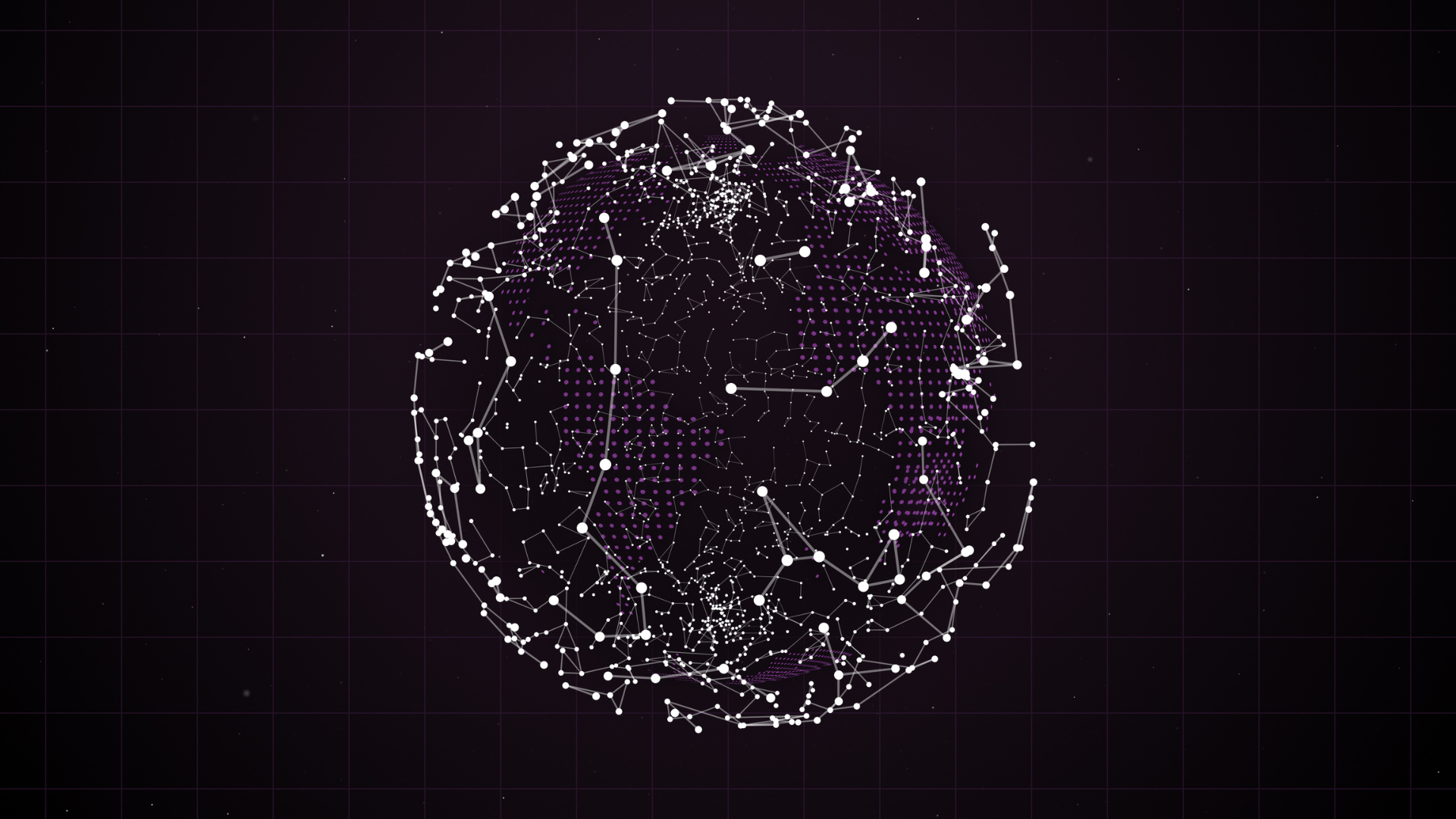
March 21, 2025
How to Successfully Implement Agentic AI in Your Organization
Author:

CSO & Co-Founder
Reading time:
10 minutes
Agentic AI offers businesses the potential to revolutionize operations, automate intricate processes, enhance decision-making, and stimulate innovation. However, its successful implementation needs meticulous planning, a robust infrastructure, and a well-prepared team.
This guide equips business decision-makers with a comprehensive framework to navigate the complexities of AI agent deployment and maximize its transformative impact.
What is Agentic AI?
Agentic AI refers to artificial intelligence systems designed to act with a high degree of autonomy on behalf of users or organizations. Unlike traditional AI systems that perform specific, predefined tasks, agentic AI can:
- Set and pursue goals independently
- Make decisions based on complex criteria
- Take initiative without constant human direction
- Adapt strategies based on changing circumstances
- Coordinate across multiple systems and tasks
- Learn from outcomes to improve future performance
Think of agentic AI as a proactive assistant rather than a passive tool. It can understand what needs to be done, develop plans to accomplish objectives, execute those plans, overcome obstacles, and learn from its experiences – all with minimal human supervision.
Unlike previous waves of AI enthusiasm that promised more than they could deliver, today’s agentic AI technologies can demonstrate real capabilities and business value, driving the current surge in interest, investment, and implementation.
This shift represents not just technological evolution but a fundamental rethinking of the relationship between humans and machines in organizational settings – from tools we actively operate to partners that can take initiative while working toward our goals.
The journey from concept to organizational reality, however, is filled with challenges. As businesses seek to harness these powerful new systems, they encounter technical hurdles, organizational resistance, ethical dilemmas, and strategic complexities.
Successfully navigating these challenges requires not just technological expertise but a comprehensive approach encompassing infrastructure, talent, governance, and culture.

Read more: Understanding AI Agents: A Guide to AI Agentic Workflow

What Infrastructure Do You Need for Deploying Agentic AI?
If you are into Formula1 or speed, you should picture deploying AI agent like building a high-performance race car. You might have a brilliant design and a skilled driver, but without the right track, fuel, and maintenance team, that car will never reach its potential. For AI agents, infrastructure is that essential foundation. Without proper infrastructure, even the most advanced AI will struggle to deliver results; the right setup ensures your AI agents can:
- Process information quickly enough to be useful
- Handle the enormous data they need to learn and improve
- Remain available when you need them
- Scale as your needs grow
- Operate securely and reliably
How to Select the Right Computing Resources for Agentic AI
AI agents, especially those based on deep learning, demand significant computing power. Choosing the right resources is essential for training and deploying these agents. Let´s have a look at the possibilities to choose among:
- Cloud Services: Cloud platforms like AWS, Azure, and Google Cloud offer scalable computing resources, including virtual machines and container services, that can be adjusted based on demand. According to Gartner, worldwide end-user spending on public cloud services is forecast to total $678.8 billion in 2024, an increase of 20.4% from $563.6 billion in 2021 [1]. This demonstrates the increasing reliance on cloud infrastructure to support AI initiatives.
- GPUs and TPUs: Graphics Processing Units (GPUs) and Tensor Processing Units (TPUs) are specialized hardware accelerators designed for AI workloads. GPUs are widely available and offer excellent performance for training and inference. TPUs, developed by Google, are optimized for TensorFlow and provide even greater performance for specific AI tasks. Case Study: JPMorgan Chase leverages GPUs in the cloud to accelerate AI model training for fraud detection, reducing training time by up to 50% [2].
- High-Performance Computing (HPC): For complex simulations and large-scale data processing, HPC clusters offer the necessary computational power. These clusters can be deployed on-premises or accessed through cloud providers. According to Hyperion Research, the global HPC market is expected to reach $44 billion by 2027, indicating a growing demand for powerful computing resources for AI and other advanced applications [3].
How to Design an Effective Data Architecture for AI Agents
While robust computing resources provide the engine for your AI systems, they’re only half the equation. Even the most powerful computational infrastructure will underperform without proper data architecture – the second critical pillar of effective AI deployment.
Data is the lifeblood of AI agents, it provides the nutriment for better decisions. A robust data architecture ensures that agents have access to the right data at the right time. In order to achieve that, let’s break down the optimal structure:
- Distributed Systems: Distributed file systems like Hadoop Distributed File System (HDFS) and object storage services like Amazon S3 can store and manage large volumes of data across multiple nodes.
- Vector Databases: Vector databases like Pinecone and Milvus are optimized for storing and querying vector embeddings, which are used to represent data in high-dimensional space. These databases enable efficient similarity searches and are crucial for tasks like recommendation and semantic search.
- Data Lakes: Data lakes provide a centralized repository for storing structured, semi-structured, and unstructured data. They allow organizations to ingest data from various sources and process it using different tools and frameworks. Deloitte reports that organizations with well-managed data lakes are 9 times more likely to achieve revenue growth exceeding 20% per year [4].
- Real-Time Data Streaming: Implement technologies like Apache Kafka to ingest and process real-time data streams. Case Study: Target uses real-time data streaming to power its AI-driven personalization engine, resulting in a 10% increase in online sales [5].
What Integration Strategies Ensure Seamless AI Agent Operations?
After establishing robust computing resources and intelligent data architecture, the third critical challenge emerges: how to connect your AI agents with existing business systems. This integration challenge often determines whether AI investments deliver transformative value or become isolated technological islands.
Integrating AI agents with existing systems presents unique challenges. Unlike traditional software, AI agents:
- Often require access to data across multiple systems
- May need to make decisions that affect various applications
- Must operate at speeds that don’t create bottlenecks
- Need to maintain connections even as other systems evolve
A well-defined integration strategy ensures that AI agents can seamlessly interact with other components of your IT infrastructure. It is therefore fundamental for decision making to actually have a look at all possibilities to make the best informed choice.
- APIs: APIs (Application Programming Interfaces) provide a standardized way for AI agents to communicate with other systems. RESTful APIs are widely used due to their simplicity and flexibility.
- Middleware: Middleware platforms like Apache Kafka and RabbitMQ facilitate communication between different systems by providing message queuing and routing capabilities.
- Data Integration Tools: Tools like Informatica PowerCenter and Talend Data Integration can extract, transform, and load data from various sources into a central repository.
- Microservices Architecture: Adopt a microservices architecture to enable independent deployment and scaling of AI agents. Adobe successfully transitioned to a microservices architecture, reducing deployment times from weeks to minutes and improving system resilience [6].

Read more: Agentic AI API. How To Make Your AI Agent Talk to Other Software: Integration Patterns That Work

From Pilot to Enterprise Scale: Implementing Agentic AI Strategically
A structured implementation strategy is essential for AI agent success, progressing through three key phases that build on each other to maximize value while minimizing risk.
The Pilot Phase: Starting Small and Smart
Pilot projects validate AI capabilities in controlled environments before broader implementation:
- Business Alignment: Choose projects addressing specific business goals or pain points
- Clear Success Metrics: Establish quantifiable measures like efficiency gains or cost reductions
- Feasibility Assessment: Match project scope with available resources and technical capabilities
- Risk Management: Identify potential challenges and develop specific mitigation strategies
Well-selected pilots demonstrate value, build confidence, and provide crucial learning experiences that inform future expansion.
The Deployment Phase: From Experiment to Operation
After successful pilots, focus shifts to integrating AI agents into regular business operations:
- Process Integration: Map connections between AI systems and existing workflows
- User Adoption: Develop training and change management to build trust and capability
- Operational Support: Establish monitoring and maintenance procedures
- Feedback Loops: Create channels for ongoing improvement based on user experience
This phase transforms promising experiments into reliable operational systems delivering consistent value.
The Scaling Phase: Expanding Impact
The final phase involves expanding successful AI implementations across the organization:
- Horizontal Scaling: Add more AI instances to handle increased workload using platforms like Kubernetes
- Vertical Scaling: Increase resources for each AI instance when complexity demands it
- Load Balancing: Distribute work evenly to prevent bottlenecks and ensure reliability
- Comprehensive Monitoring: Track performance and potential issues as scale increases
Microsoft demonstrated effective scaling by increasing Azure AI platform efficiency by 40% through automated scaling and load balancing.
By approaching implementation through these progressive phases, organizations create sustainable foundations for AI transformation—starting small, learning continuously, and expanding strategically based on proven success.
How to Mitigate Risks When Implementing AI Agent Systems
AI agent systems can introduce new risks, including security vulnerabilities and ethical concerns.

Cultural Transformation: The Human Side of AI Success
Beyond technical infrastructure and implementation strategies, successful agentic AI adoption requires fundamental cultural changes within your organization. Companies that create an AI-friendly culture are three times more likely to achieve significant business outcomes, according to McKinsey research. This cultural shift involves fostering data-driven decision-making at all levels, promoting continuous learning and experimentation, ensuring stakeholder alignment with business objectives, and prioritizing transparency in AI systems to build trust and accountability.
Organizations must actively encourage collaboration between traditional business units and technical teams, breaking down silos that could impede AI integration. This means creating cross-functional teams where domain experts work directly with AI specialists, establishing shared vocabulary around AI capabilities, and developing governance frameworks that balance innovation with appropriate oversight. The goal is creating an environment where employees view AI not as a threat but as a powerful tool that enhances their capabilities.
Conclusion: Leveraging External Expertise for Accelerated Transformation
Many organizations find partnering with specialized AI consulting firms accelerates both implementation and cultural adaptation. Beyond technical deployment, these partnerships can facilitate valuable knowledge transfer through customized training programs, mentorship arrangements, and collaborative project execution. External partners bring cross-industry experience and best practices that can help avoid common pitfalls while building internal capabilities more rapidly than purely in-house approaches.
The most effective partnerships establish clear knowledge transfer mechanisms from the beginning, with consultants gradually transitioning from implementation leads to advisory roles as internal teams develop competency. This approach balances the need for specialized expertise with the long-term goal of organizational self-sufficiency in managing and evolving agentic AI systems.
Resources
- Gartner reports on their website: https://www.gartner.com (“worldwide end-user spending on public cloud services forecast”).
- JPMorgan Chase JPMorgan Chase AI Tech Blog.
- Hyperion Research: : https://www.hyperionresearch.com.
- Deloitte “Data Lake” Report: Search “Deloitte data lake report”.
- Target Engineering Blog:: Target Engineering Blog AI personalization.
- Adobe Engineering Blog: Search: Adobe microservices architecture blog.
- Accenture “Point of View” Report: Search https://www.accenture.com/content/dam/accenture/final/a-com-migration/thought-leadership-assets/accenture-built-to-scale-pdf-report.pdf
Category:





